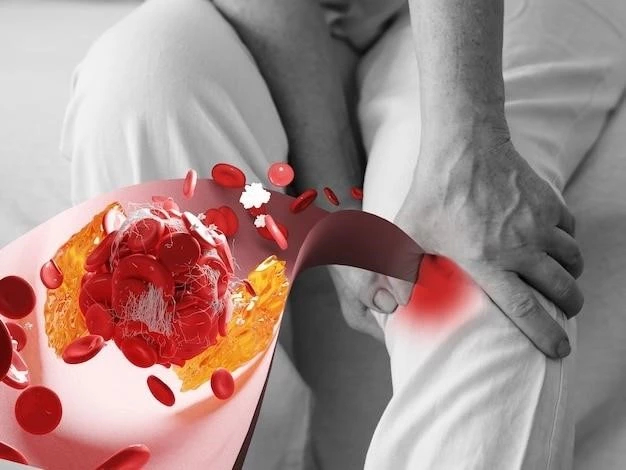Symptoms of Acute Promyelocytic Leukemia
Common Symptoms
- Unusual bleeding or bruising
- Fatigue and weakness
- Fever and frequent infections
- Shortness of breath
- Pale skin
- Weight loss
Specific Symptoms
- Disseminated intravascular coagulation (DIC)
- Bleeding from the gums or nose
- Abnormal blood clotting
- Enlarged spleen
- Abdominal pain or swelling
- Neurological symptoms
Treatment Options for Acute Promyelocytic Leukemia
Chemotherapy
Chemotherapy is a common treatment for Acute Promyelocytic Leukemia․ It involves the use of powerful drugs to kill cancer cells․ This treatment may be combined with other therapies to achieve the best outcomes for patients․
Targeted Therapy
Targeted therapy is a specialized treatment approach for Acute Promyelocytic Leukemia that focuses on specific molecular targets involved in the growth of cancer cells․ This therapy aims to block the growth and spread of leukemia cells while minimizing damage to normal cells, leading to more precise and effective treatment outcomes․

Causes of Acute Promyelocytic Leukemia
Genetic Factors
Genetic factors play a crucial role in the development of Acute Promyelocytic Leukemia․ Specific genetic mutations, such as the translocation between chromosomes 15 and 17, are commonly associated with this subtype of leukemia․ Understanding these genetic abnormalities is essential for accurate diagnosis and targeted treatment strategies․
Environmental Factors
Environmental factors may contribute to the development of Acute Promyelocytic Leukemia․ Exposure to certain chemicals, radiation, or toxins in the environment can increase the risk of developing this type of leukemia․ Understanding and minimizing exposure to these environmental factors is essential for prevention and management of the disease․
Prognosis and Survival Rates for Acute Promyelocytic Leukemia
Prognostic Factors
Prognosis in Acute Promyelocytic Leukemia depends on various factors such as age, overall health status, specific genetic abnormalities, response to treatment, and presence of other health conditions․ Close monitoring by healthcare professionals and personalized treatment plans are essential to determine the prognosis and provide appropriate care․
Survival Rates
Survival rates for Acute Promyelocytic Leukemia have significantly improved with advances in treatment options․ The 5-year survival rate is approximately 80-90% with timely and appropriate therapy․ Regular follow-up care and adherence to treatment plans are essential for maximizing survival outcomes and quality of life for patients․
Diagnosis of Acute Promyelocytic Leukemia
Blood Tests
Blood tests are essential for diagnosing Acute Promyelocytic Leukemia․ They help identify abnormal levels of white blood cells, red blood cells, and platelets in the blood․ Additionally, genetic tests can detect specific chromosomal abnormalities associated with this type of leukemia, aiding in accurate diagnosis and treatment planning․
Bone Marrow Biopsy
A bone marrow biopsy is a critical diagnostic procedure for Acute Promyelocytic Leukemia․ It involves the extraction of bone marrow samples for examination to determine the presence of abnormal leukemia cells․ This test provides valuable information on the extent of bone marrow involvement, genetic mutations, and disease progression, guiding appropriate treatment strategies․
Risk Factors for Acute Promyelocytic Leukemia
Age
Age is a significant risk factor for Acute Promyelocytic Leukemia, with the disease often affecting adults aged 40-60 years․ Older individuals are at higher risk due to potential age-related changes in the bone marrow and immune system․ Close monitoring and appropriate medical care are crucial for managing the disease in older patients․
Genetic Predisposition
Genetic predisposition is a key risk factor for Acute Promyelocytic Leukemia․ Inherited genetic mutations or familial history of leukemia can increase the likelihood of developing this disease․ Understanding the genetic factors involved can help identify at-risk individuals and implement appropriate screening and preventive measures to reduce the risk of developing Acute Promyelocytic Leukemia․
Supportive Care for Acute Promyelocytic Leukemia Patients
Symptom Management
Effective symptom management is crucial in caring for Acute Promyelocytic Leukemia patients․ Treatments aim to alleviate symptoms such as bleeding, infections, and fatigue․ Close monitoring and timely interventions by healthcare providers help improve the patient’s quality of life during treatment․
Psychological Support
Psychological support is essential for Acute Promyelocytic Leukemia patients․ Coping with the emotional impact of the diagnosis and treatment can be challenging․ Counseling, support groups, and mental health services play a vital role in addressing psychological well-being and helping patients and their families navigate through the challenging journey of leukemia treatment․
Advances in Research for Acute Promyelocytic Leukemia
Novel Therapies
Ongoing research in Acute Promyelocytic Leukemia has led to the development of innovative treatments, including targeted therapies and immunotherapies․ These novel approaches aim to improve treatment outcomes, reduce side effects, and enhance the effectiveness of therapies for better patient care and long-term prognosis․
Clinical Trials
Clinical trials play a vital role in advancing the treatment of Acute Promyelocytic Leukemia․ These studies evaluate new therapies, treatment combinations, and diagnostic approaches to improve patient outcomes․ Participation in clinical trials offers access to cutting-edge treatments and contributes to the development of more effective strategies in managing this type of leukemia․
